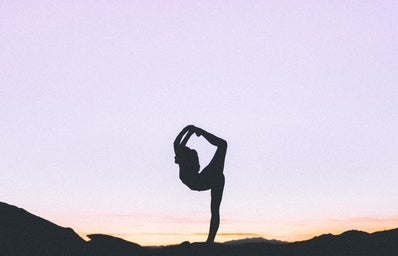It’s Women’s Health Care Month, so I’m going to talk about Anemia and Vitamin D deficiency. I found out a few months ago after getting blood work done that I had both. I have another condition called Gastritis and it puts me at risk for both anemia and vitamin D deficiency. Vitamin D deficiency is very common, especially during the winter when there is barely any sunlight. Anemia is a little more serious, but not a huge concern either. When you look at its definition, which is a condition in which the blood doesn’t have enough healthy red blood cells, which sounds alarming, but it is very common. Both anemia and vitamin D deficiency are very common in women and usually occur in women more than men.
I had to start taking 1000 mg of Vitamin D every day and an Iron multivitamin. I noticed right away an improvement in my energy. Before, I was tired all the time. This wasn’t a ‘tired from the combination of work and school’ tired, but an excessive tiredness where I wanted to sleep all the time. I was falling asleep during homework and reading and taking naps throughout the day. I had no energy at all and felt weak. The littlest of tasks would tire me out and work became even more exhausting than usual. I was yawning all the time and looked tired all the time despite sleeping a whole lot. I was having a lot of headaches too.
I actually had anemia when I was in high school once and when I was told I had it again, I automatically connected the way I was feeling to how I felt when I had it once before. I used to come home from school, start doing my homework and fall asleep. It was the exact same thing. I hadn’t thought about that in a long time though, so it only came back when I found out I had anemia once again.
There are many different types of anemia. I have iron-deficiency anemia, which is the most common type. Bone marrow needs iron to make hemoglobin and without enough iron, our bodies can’t produce enough hemoglobin for red blood cells, which leads to the red blood cells not receiving enough oxygen. Other types include vitamin deficiency anemia (when your body isn’t getting enough folate and vitamin B-12), anemia of chronic disease (anemia from diseases like cancer and HIV/AIDS), aplastic anemia (life-threatening condition when body doesn’t produce enough red blood cells), anemias associated with bone marrow disease (anima caused by diseases like leukemia and myelofibrosis), hemolytic anemia (when red blood cells are destroyed faster than bone marrow can replace them), sickle cell anemia (when defective form of hemoglobin forces red blood cells to assume an abnormal crescent (sickle) shape), and other anemias such as thalassemia (less than normal amount of oxygen-carrying proteins) and malarial (malaria) anemia.
Some signs and symptoms of anemia are as follows:
· Fatigue
· Weakness
· Pale or yellowish skin
· Irregular heartbeats
· Shortness of breath
· Dizziness or lightheadedness
· Chest pain
· Cold hands and feet
· Headache
Vitamin D helps our bodies absorb calcium, which is one of the main building blocks of bones. Vitamin D has a role in our nervous, muscle, and immune systems. We get Vitamin D through our skin (sunlight), from our diet (fish, cheese, cereal), and supplements.
The amount of vitamin D we need each day depends on our age. The recommend amounts are:
· Birth to 12 months: 400 International Units
· Children 1-13 years: 600 International Units
· Teens 14-18 years: 600 International Units
· Adults 19-70 years: 600 International Units
· Adults 71 years and older: 800 International Units
· Pregnant and breastfeeding women: 600 International Units
Some signs and symptoms of vitamin D deficiency are as followed:
· Getting sick often
· Tiredness
· Bone and back pain
· Depression
· Impaired Wound Healing
· Bone loss
· Hair loss
· Muscle pain

